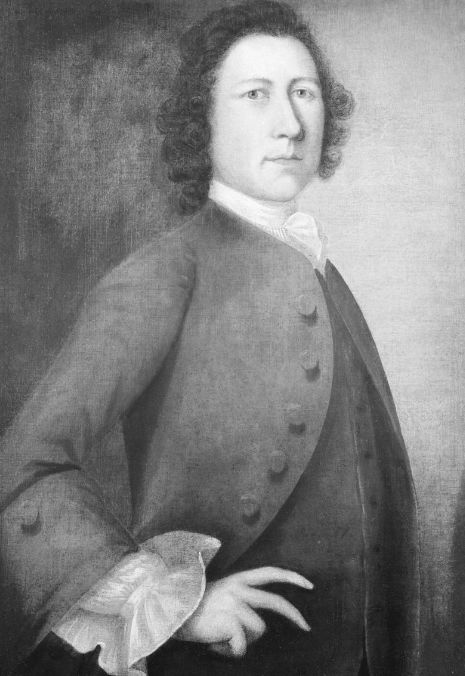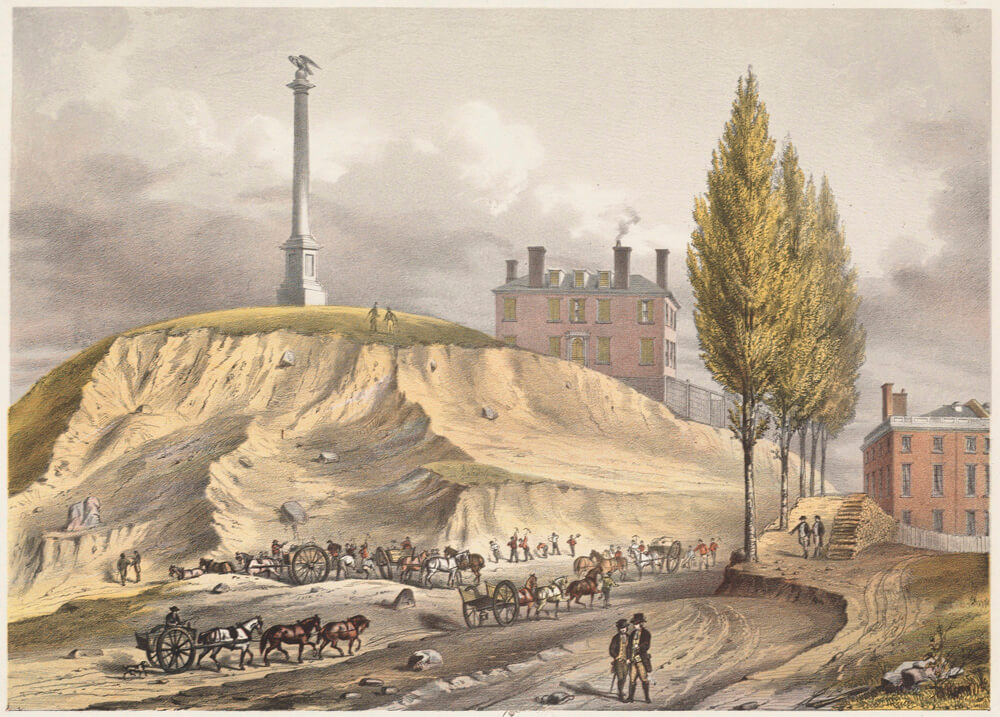Thomas Hodson
Thomas Hodson’s quarry extracted gravel from the north slope of Beacon Hill in the middle of the eighteenth century. This provoked public outrage, but the excavation of Beacon Hill for the expansion of Boston was too difficult to stop.
In the July 1900 issue of a quarterly historical magazine published by the College of William and Mary, a public librarian from Maine inquired about information regarding Thomas Hodson’s early life, records of which are scant. Hodson, born in Maryland in the early eighteenth century, relocated to Boston after his first wife passed away. Boston’s town records indicate that Hodson declared his intention to marry his second wife, Mary Lee, on April 2, 1744. It is also known that Hodson had large real estate holdings in Beacon Hill, owning most of the area during the middle of the 18th century. Hodson’s most visible holding was a piece of land on Derne Street, by the north slope of Beacon Hill, where he established a gravel quarry. The town of Boston purchased Hodson’s gravel in order to fill out the low areas of downtown, primarily the docks. But Hodson’s quarry did not escape public criticism, including by town authorities, for it began a decades-long process that reshaped (or from another perspective, defaced) Beacon Hill.
For over one hundred years, most of Beacon Hill was set aside as a cow pasture, with the town of Boston claiming the top of the hill for a beacon adorned with an eagle. But Thomas Hodson’s quarry began digging into the north slope of Beacon Hill by 1764, which caused outrage for a number of interrelated reasons. Some residents were concerned that the quarry would take so much out of the hill’s surface that it would fall down. Notably, Hodson was not the only person responsible for the digging, for others dug gravel from his lot (which, because he owned it, earned him considerable rent). A town meeting in May 1764 declared that “whereas the said Hill is in very great danger of being destroyed by Thomas Hodson and others digging gravel on his lot…it would be advisable to apply to the Assembly for an Act to prevent the destruction of Beacon Hill.” Hodson refused to halt his digging, and the state legislature did not act to restrict it. Hodson was described by Robert Means Lawrence, in Old Park Street and Its Vicinity (1922) as an “unaccommodating citizen” because of his recalcitrance. Even when prominent residents of Beacon Hill, such as John Otis and Thomas Hancock (who owned the first house built on Beacon Hill in 1737), attempted to buy out Hodson in order to halt the digging, he did not budge.
The original Beacon Hill was so dug out by the end of the eighteenth century that Timothy Dwight, then president of Yale College, likened it to a waste dump. Though Hodson died in 1787, the reshaping of Beacon Hill continued when Charles Bulfinch and Harrison Gray Otis purchased land to develop new buildings, such as the Otis House, built by Bulfinch for Harrison and Sally Otis to live in 1796. This required smoothing out the western side of Beacon Hill to create ideal, level plots. But the culmination of the process Hodson began was the construction of the new State House in 1798, also by Bulfinch, which entailed digging out Beacon Hill until it stood level with the building. The Mount Vernon Proprietors, a group including eminences such as Otis and Jonathan Mason, took advantage of the excavation to build even more homes once the State House was erected.
The north slope of Beacon Hill, part of the old West End, stood at the crossroads of a key moment in Boston’s history. Hodson’s gravel quarry in the eighteenth century sparked a struggle between change and tradition that deeply affected what became our city’s landscape.
Article by Adam Tomasi
Source: Frick Art Reference Library; William and Mary Quarterly (1900); Twenty-Eighth Report of the Record Commissioners: Boston Marriages, 1700-1751 (Internet Archive); Old Park Street and Its Vicinity (1922); Sentry, or, Beacon Hill: The Beacon and the Monument of 1635 and 1790 (1877); Beacon Hill: Its ancient pastures and early mansions (1925)










